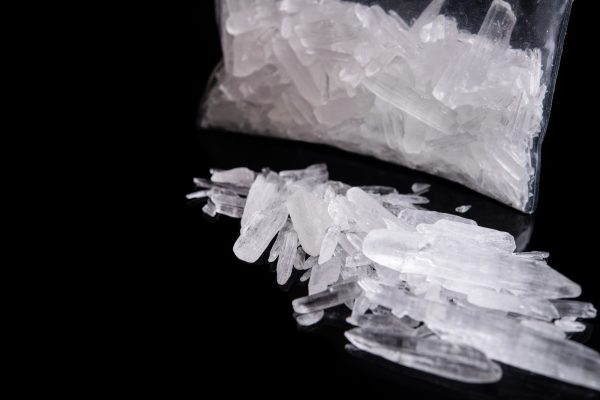ASEAN Beat | Economy | Southeast Asia
The country’s four largest meth seizures on record have come over the past 15 months – striking evidence of the scale of the recent Mekong drug production boom.
Over the weekend, authorities in Laos made another gargantuan seizure of methamphetamines, the latest sign of the continuing explosion of illicit drug production in mainland Southeast Asia. On Saturday, an official from the United Nations Office on Drugs and Crime (UNODC) said that the government had intercepted a haul of 33 million meth tablets along with 500 kilograms of crystal methamphetamine, their third largest seizure of the drug on record.
According to a report by The Associated Press, which cited Jeremy Douglas, the UNODC’s Bangkok-based regional representative, the seizure came after 200,000 tablets were found on Friday night in a truck at a checkpoint in Bokeo province in northwestern Laos. Information gleaned from the truck’s driver led immediately to the larger seizure.
The bust is just the latest evidence of the massive amounts of illegal narcotics – particularly amphetamine-type stimulants (ATSs) – that are now flooding out of the conflict zones of Myanmar’s Shan State. Back in May, UNODC reported that the number of methamphetamine tablets seized in East and Southeast Asia exceeded 1 billion for the first time in 2021. They were part of a region-wide haul of almost 172 tons of methamphetamine – an amount seven times higher than that seized 10 years earlier.
The spike is part of a long-term trend of Myanmar-based drug syndicates moving away from the production of heroin, which involves the cultivation of a perishable crop – the opium poppy – and toward the production of synthetic narcotics, including ATSs in their various forms. According to UNODC, these syndicates are now able to produce the ingredients to manufacture various drugs, including crystal meth and meth pills (yaba), as well as synthetic opioids.
The increase has also been aided by the COVID-19 pandemic and the associated movement restrictions, which pushed these syndicates to diversify their transport routes. According to UNODC, an increasingly prominent trafficking route now runs through Laos, a nation that has relatively weak law enforcement capacity and shares a remote and loosely policed border with the easternmost reaches of Shan State in Myanmar.
The evidence for this is that the country’s four largest meth seizures on record have come in the past 15 months. The largest took place in October 2021, when police in Bokeo seized more than 55.6 million meth pills in a single raid, along with about 1,500 kilograms (3,300 pounds) of crystal meth. The country’s second-largest seizure, of 36.5 million pills, took place in January of this year, also in Bokeo. The fourth-largest took place in July 2021, when police stopped a truck in the capital Vientiane that contained nearly 17 million meth tablets.
To put the colossal figures in historical perspective, UNODC reported last year that Laos had seized 18.6 million methamphetamine tablets and 5.5 tons of crystal meth in the whole of 2020, up from 17.7 million and 5.1 tons in 2019. The agency also reported that in 2020, the price of methamphetamines in East and Southeast Asia had dropped to its lowest level in 10 years, as the market became overwhelmed with supply.
It is no surprise that three of these four large Lao seizures took place in Bokeo, close to the trafficking route that runs from Shan State into Laos. Indeed, this weekend’s haul was intercepted in close proximity to the Golden Triangle Special Economic Zone, a gambling-centered development run by a Chinese businessman that operates virtually independent of Lao government oversight and has long been suspected of involvement in the drug trade.
With Myanmar’s economy now in near-total dysfunction due to last year’s military coup, this figure appears set to increase further in 2023.


